Letter-sound association Alphabet Worksheets for Ages 4-9
12 filtered results
-
From - To
Discover our engaging Letter-Sound Association Alphabet Worksheets designed especially for children aged 4-9. These interactive activities help young learners connect letters with their corresponding sounds, laying a strong foundation for reading and literacy skills. Featuring colorful illustrations and diverse exercises, our worksheets encourage children to explore phonics in a fun and stimulating environment. Perfect for both classroom and home use, these resources adapt to various learning styles, making letter-sound recognition an exciting adventure. Help your child develop essential reading skills while fostering a love for learning with our comprehensive collection of alphabet worksheets tailored for early learners!
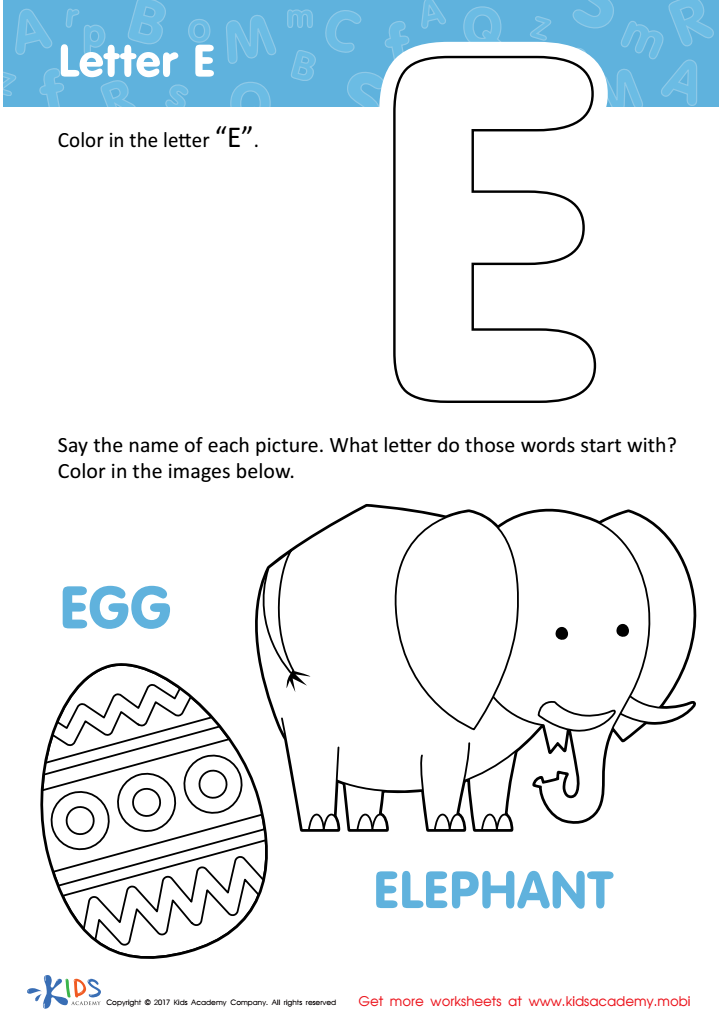

Letter E Coloring Sheet


Letters J and K Tracing Worksheet
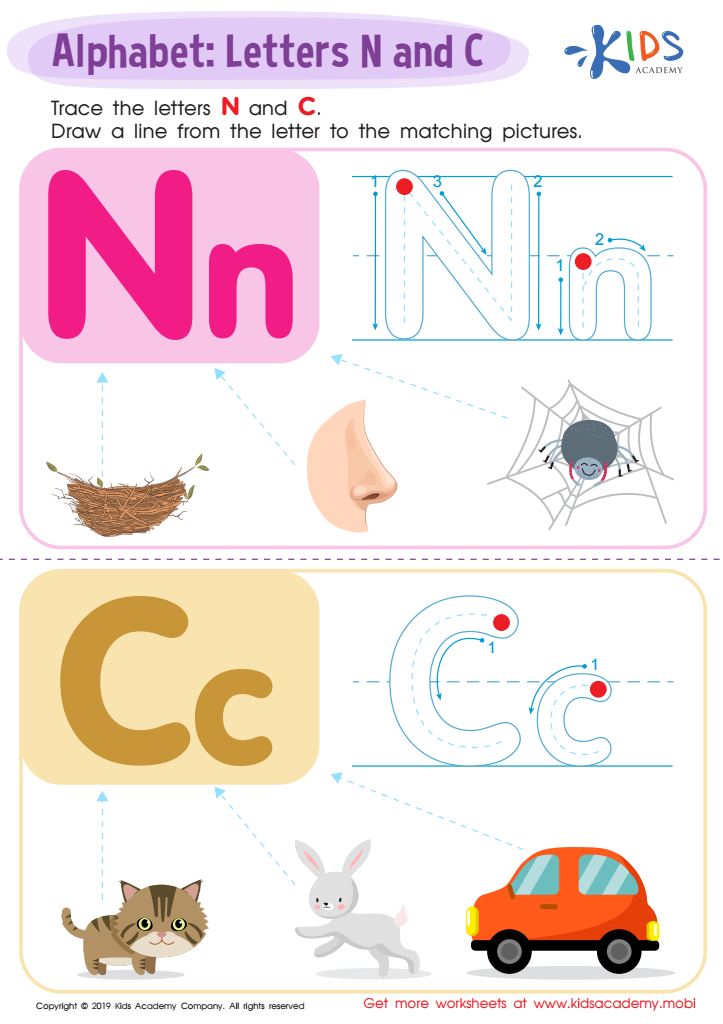

Letter N and C Tracing Worksheet
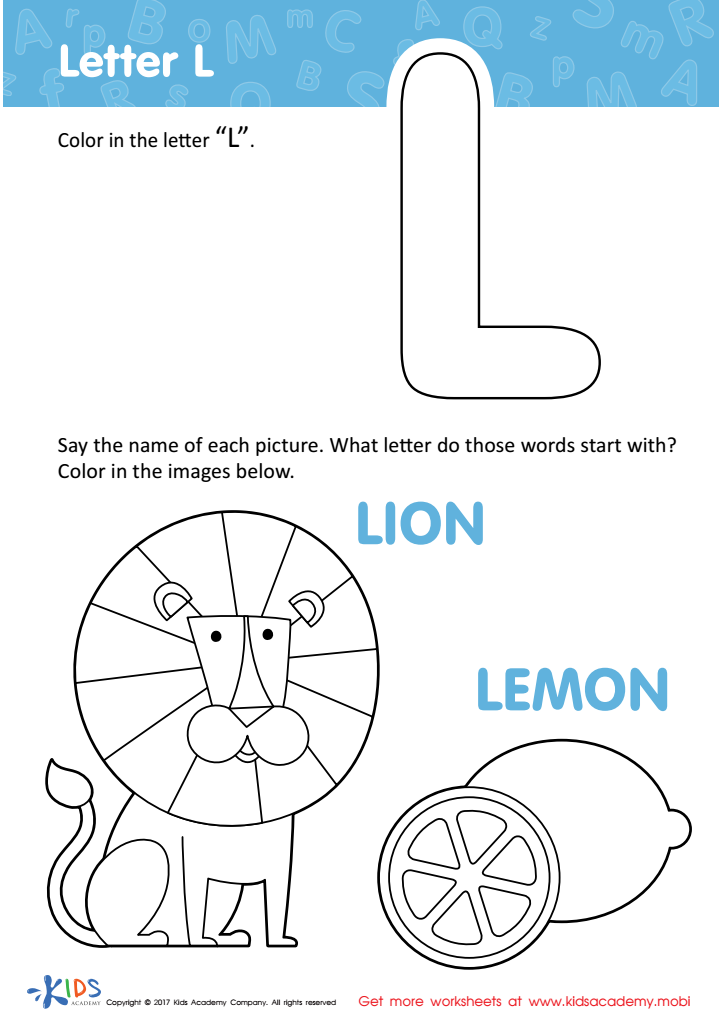

Letter L Coloring Sheet
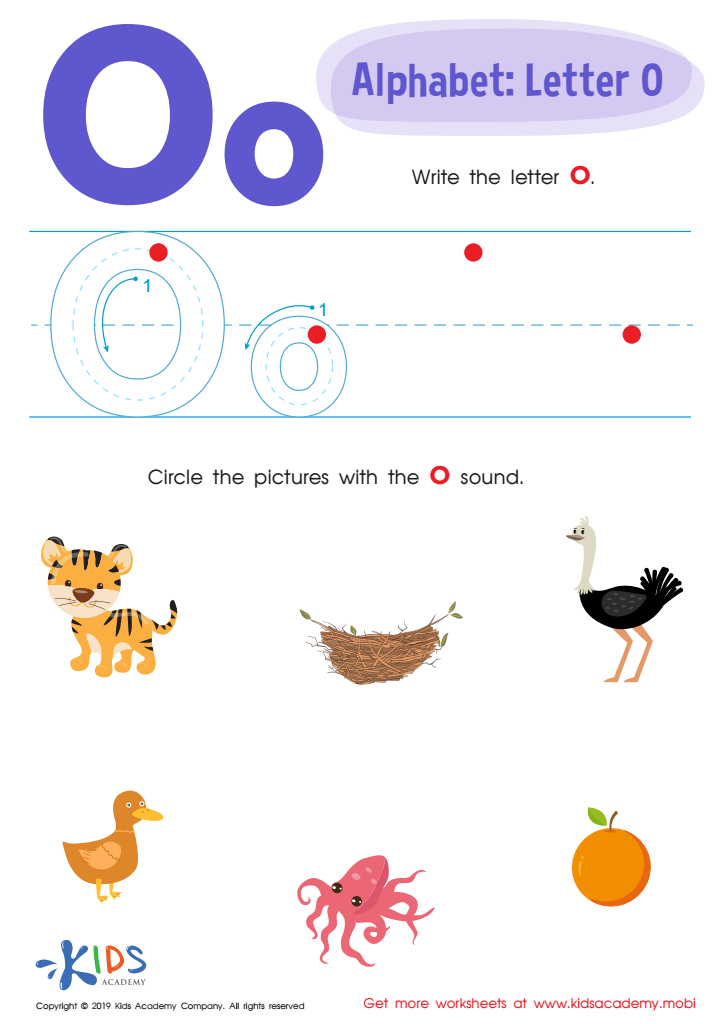

Letter O Tracing Worksheet
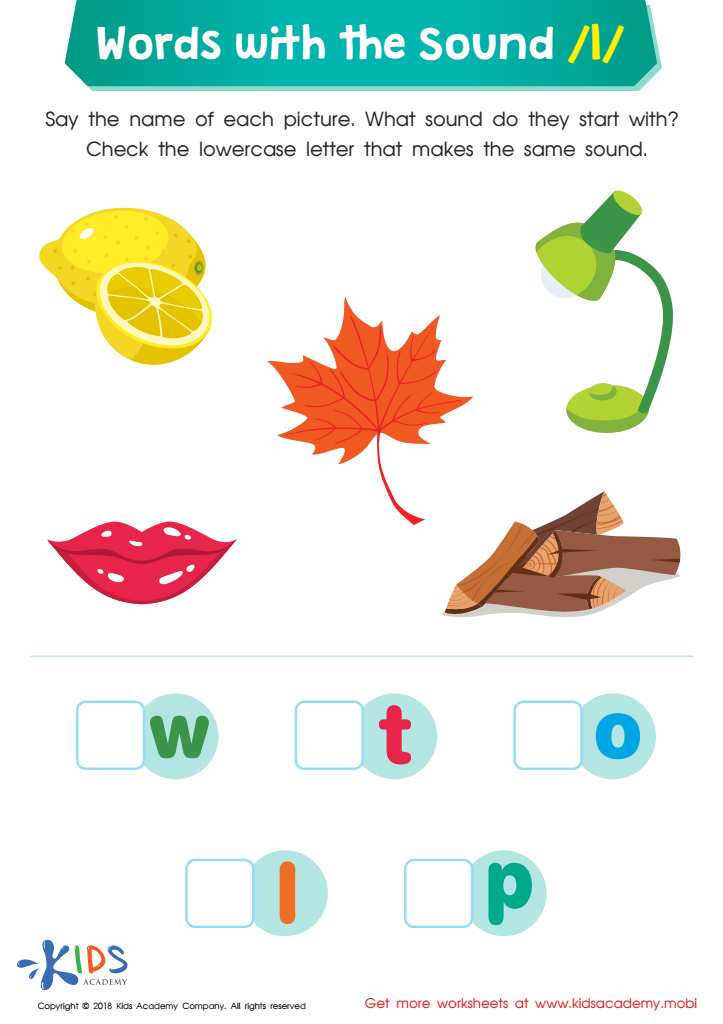

Words with Sound L Reading Worksheet
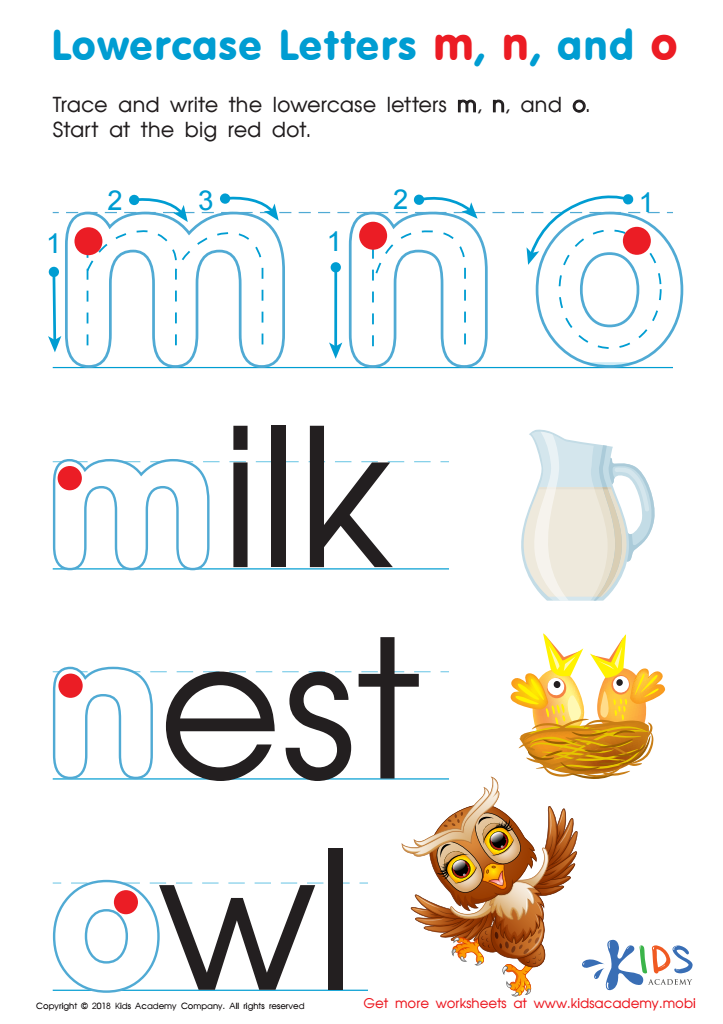

Lowercase Letters m n o Worksheet
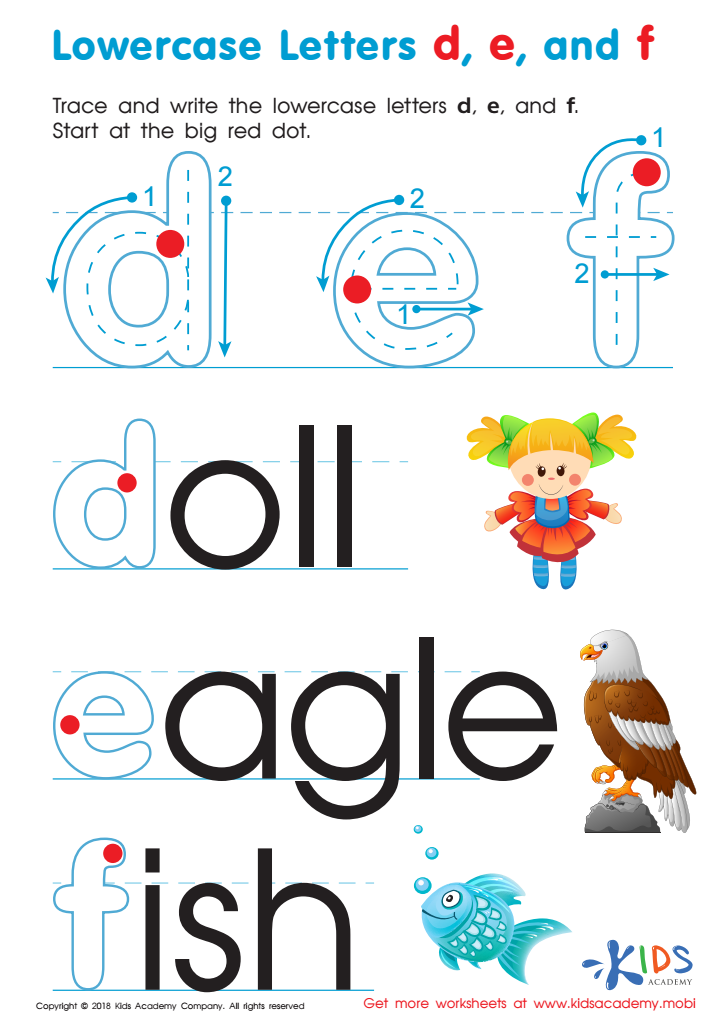

Lowercase Letters d e f Worksheet
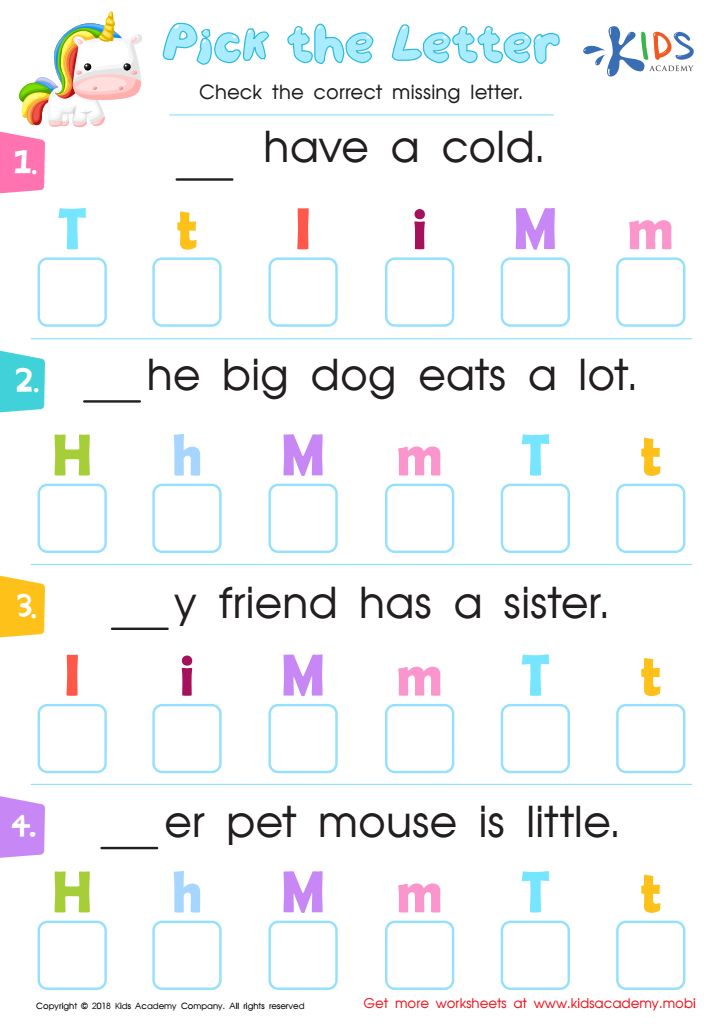

Pick the Letter Worksheet
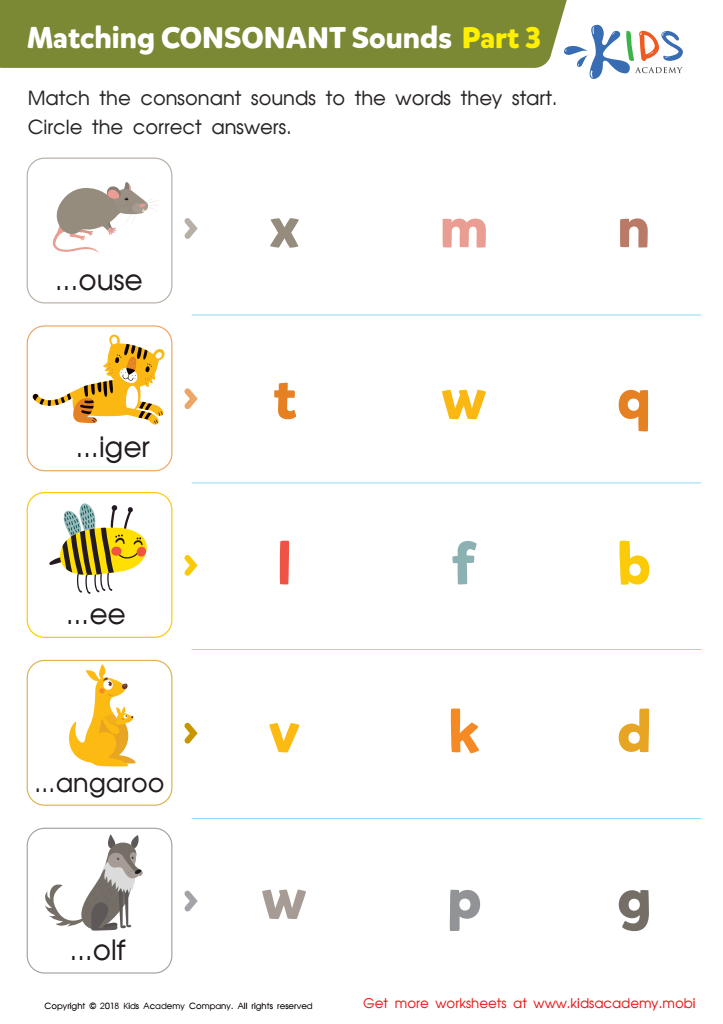

Matching Consonant Sounds: Part 3 Worksheet
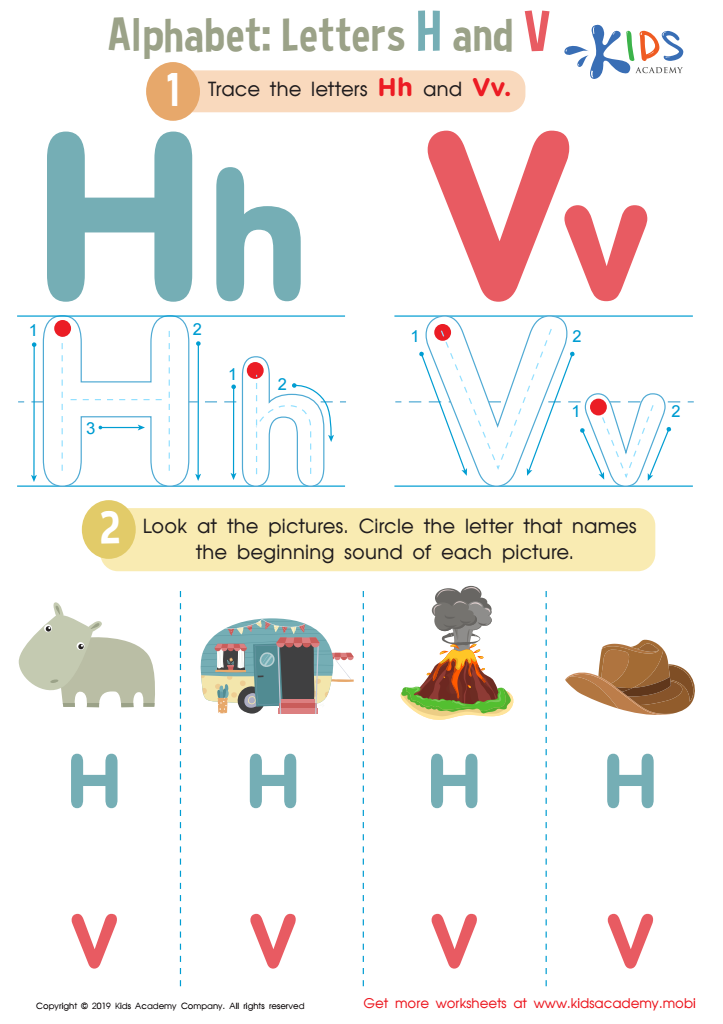

Letters H and V Tracing Worksheet
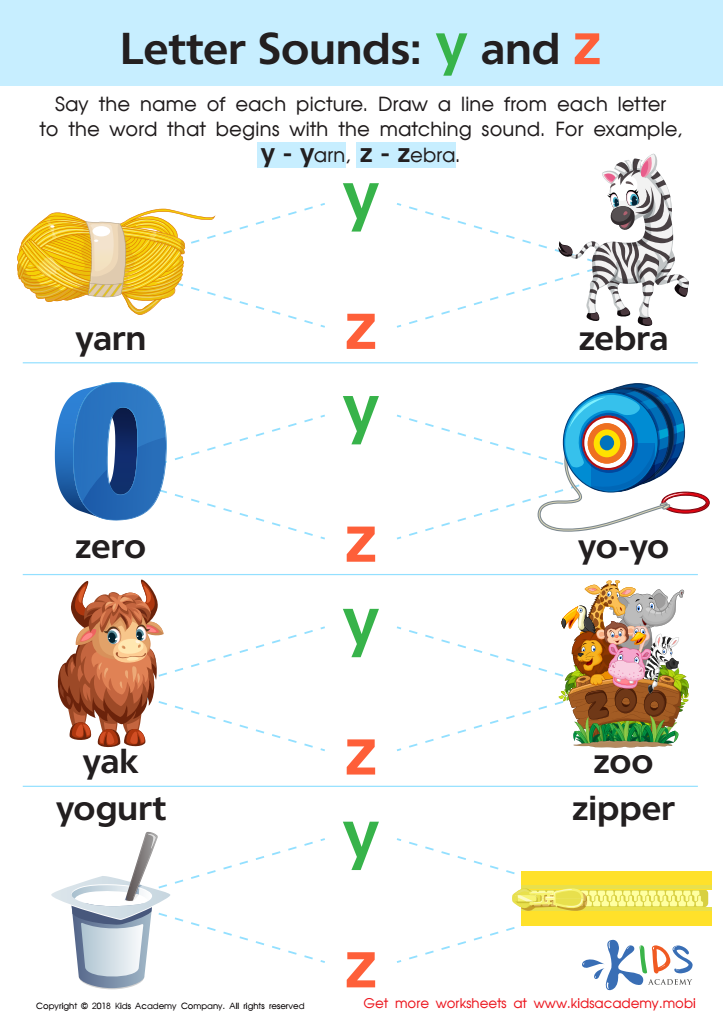

Letter Y and Z Sounds Worksheet
Letter-sound association is a fundamental aspect of early literacy development for children ages 4 to 9. This skill, which involves linking individual letters to their corresponding sounds, lays the groundwork for effective reading and writing. Parents and teachers should prioritize this association because it significantly aids children in decoding words. When children understand that the letter "B" produces the /b/ sound, they can start to blend sounds to recognize simple words like “bat” or “bed.”
Furthermore, fostering letter-sound associations in early education boosts phonemic awareness, an essential skill for reading success. Studies show that strong phonemic awareness correlates with improved reading comprehension and overall literacy proficiency. As a child learns letter-sound relationships, they gain confidence and motivation to engage with texts, fostering a love for reading that can last a lifetime.
Additionally, this foundational knowledge assists with spelling, as children learn to apply their understanding of sounds to write words accurately. Engaging parents in this learning process through reading activities, phonics games, and sound recognition practice reinforces skills taught in school. In conclusion, cultivating letter-sound associations is crucial for unlocking communication skills that are vital for children's academic success and daily interactions.
 Assign to My Students
Assign to My Students












